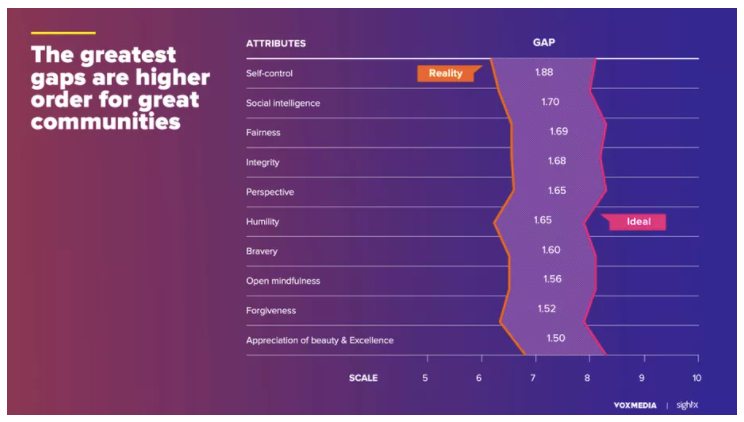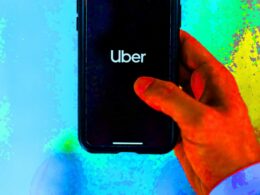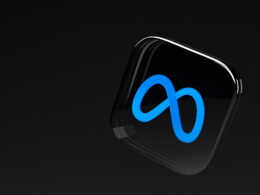The following has been adapted from a live presentation from Edwin Wong, Vox Media’s SVP of Insights & Innovation during a weekly ‘Smart Solutions for Extraordinary Times’ discussion. You can view the webinar here.
When I was a child, I wasn’t the healthiest of children. There was a span of two years where I would only eat McDonald’s Happy Meals every meal, and it had a profound impact on my health. At this point, everyone reading this recognizes that eating fast food for two meals a day is not ideal for health.
By
In a similar way, are we currently in the first inning of understanding our digital diets? Many of us have been feeling uneasy for years, and it’s time to figure out why.
We are all part of the collective Borg
If any of us believes we are not addicted to our devices and digital media experiences, we are kidding ourselves. We spoke to over 4,000 people who represent the digital U.S. population, and found that more than half (52%) pick up their devices at least once every waking hour.
Not surprisingly, the younger we are, the more likely this behavior exists.
- 65% of 18-34 years look at their devices every hour
- 61% of 35-44 years look at their devices every hour
- 54% 45-54 years look at their devices every hour
The gap is not as big as you would think. Therefore, we have to question whether this is a learned behavior like a Pavlovian response.
The algorithm is driven by YOU…sort of
It’s obvious that the addictive nature of our smartphones is rooted in our apps, and marketers are eager to capture those eyeballs. In fact, eMarketer tells us that 75% of every digital dollar spent will be on social platforms like Google and Facebook. But as an industry that values context, consumer mindset, and ad effectiveness, have we ever taken a step back to wonder what creates the magic that drives this behavior?
I’m sure most have a basic understanding that algorithms are based on some form of time/recency, closeness/friendship, personal interest, and optimized to engagement/behavior. They are tuned to you to ensnarl you in engaging with content. In fact, I remember my early days working at Yahoo when people would yell at me that they hated seeing so many Britney Spears and Kim Kardashian articles on their homepage feed and I should tell my product people to STOP. I didn’t have the heart to tell them, you are the one clicking!
Similarly, algorithms today feed off user behavior whether or not it is passive, subconscious or negative.
The passive: we love the feed because of SURPRISES!
The creation of the feed, thanks to Twitter, really helped revolutionize everything. We know humans like surprises. It’s proven by neurology. In a study by Emory and Baylor universities, scientists conducted experiments to measure the human brain’s reaction to different stimuli when it was predictable vs. unpredictable.
Contrary to the scientists’ expectations, the human reward pathways in the brain responds most strongly to the unpredictable sequence of squirts.
“We find that so-called pleasure centers in the brain do not react equally to any pleasurable substance, but instead react more strongly when the pleasures are unexpected,” Berns said. “This means that the brain finds unexpected pleasures more rewarding than expected ones, and it may have little to do with what people say they like.”
Which would have us all posit that when we actually have no clue what may come up in our feeds, the surprise is why we keep coming back.
The subconscious: the digital haze
Currently, many would agree these apps and platforms are so popular because it’s about the discovery, causes, and connections. In a very general way, consumers are satisfied with their digital experiences:
- 83% helps me discover new thing
- 64% helps me connect better with the real world
- 64% helps me supports causes I care about
However, when we brought it back to the 5 specific apps they use daily, we began to see some interesting findings. We narrowed down the choices and asked consumers to choose just 3 of these 5 basic reasons they use these apps. While most of the reasons do align with the general answers above, a very interesting 4th answer was around “I just feel addicted to checking.”
When we pick up our phones and do that same couch scrolling, how many of us feel drugged, dull, ambivalent, foggy, not functioning, tired, disconnected after the experience?
The negative: anger & disgust drive visceral & measurable reaction
We live in a digital space based entirely on response. It’s a known fact that in more recent years, app builders are beginning to use thinking developed by Robert Plutchik, a thought leader in the study of emotions. Humans have classified over 34,000 emotions that we feel, which he categorized into 8 emotion rings. He put polar emotions on opposite sides. As an example: Disgust is the opposite of trust, joy is the opposite of sadness, and anticipation is the opposite of surprise. I want you to hold on to this—the opposite to anger/disgust is trust.
From this research, we know anger is classified as an active, not passive emotion. Therefore, when we look at the feed, optimizing to anger is an easy and crude way to get people to respond, comment, share, etc. When we asked consumers to tell us when they felt angry or surprised with their digital media experiences, they told us it was usually around fake/false content and lies.
While overall most of us say we are satisfied with digital experience, consumers also describe unease:
- Only 31% say digital media is honest; 39% strongly disagree that this is an honest place
- Only 36% would trust digital media
- Only 39% feel that digital media is authentic
- 69% don’t always know “if what I see in my social feed is accurate or misleading”
When algorithms are optimized to fake content that breeds the most negative of “engagements,” especially when it’s set off by billions of fake profiles, does it surprise you that we end up with a fractured society where trust is eroding?
Building a healthy digital diet begins with trust, understanding and agency
We must start to redefine these platforms because the average consumer spends, on average, 2.5 hours a day with them. In a recent study we did for Vox Media, we found that over half of Americans (54%) are getting their news from social platforms. However, social platforms do not have editorial boards and have not done enough to regulate fake news. When talking specifically about the feed, it’s not about the most important news being surfaced but the most shocking and attention-grabbing headlines. This is causing 64% to distrust digital media and 57% unclear about what to believe.
The silver lining in all of this is that 60% still feel truth is out there and are actually looking for it.
What is so interesting is that during a pandemic, we see consumers change their passive consumption habits to actively seek out credible and trustworthy news outlets. In this and every critical moment, news is not noise—it’s our necessary narrative. Clear explanation helps consumers navigate the world armed with the most sought-after currency: reliable information. This enables us to make decisions that are best for ourselves, our loved ones, our communities, and our collective futures.
Using Seligmann’s Positivity theory, we wanted to get a sense of how consumers would compare how they feel about their digital diets versus what they’d want from this experience in the next 10-years. The largest gaps are shown here:

It clearly shows, our current digital current experience is not doing too well in creating. Much is needed to create a space where self-control, social intelligence, fairness, and integrity are as valued as humor and creativity.
When consumers feel informed and have an understanding of their situation, they feel empowered with a sense of agency that has been psychologically proven to contribute to life satisfaction. In 2010, Johnston and Finley classified their Agency Model under three main characteristics:
- Autonomy – one’s outcomes are self-determined, I control my own destiny
- Competence – feeling effective and capable of performing tasks at varying levels of difficulty
- Relatedness – feel connected, supported, and cared for
While a crisis highlights the weaknesses in our society, it can become an inflection point. Now the digital media community must ask ourselves, are we creating content, platforms, and experiences that build trust, understanding, and agency—or are we creating the problem?
What this means for Vox Media’s audiences
This is precisely why Vox Media matters. I didn’t come here to help a company game an algorithm for clicks and views. If the feed is ephemeral, passive, and dispels trust, what we seek to do at Vox Media is to literally break the algorithm. The currency our networks trade on is trust and authority—content that audiences actively seek out to empower them to make decisions in real life. Whether it is Eater telling you which restaurants are open for delivery and how to support your favorite local café; or Vox helping you understand how the pandemic affects your daily life; or you’re going to The Strategist to find the perfect work-from-home setup, the service and utility that we are providing to our audience is core to our business. Therefore it creates a relationship with our audiences that is much more active, intentional, and positive.
The data shows that our community of consumers have a significantly more positive perception of the digital space, and intend to leverage that perception to activate their daily lives. Furthermore, Vox Media consumers show significantly smaller gaps between their perceived digital lives and the ideal digital life in the future. In addition, and without any shadow of a doubt, Vox Media consumers have a significantly larger sense of self-determined agency across three components: Autonomy, Competence, and Relatedness.
As much as we have advanced our digital lives to create algorithms to goose engagement, time spent on site, and drive scale, we have yet to construct algorithms that challenge ourselves to be better to one another. We must overcome the diffusion of responsibility and become responsible. While we all have a responsibility to our shareholders, the moral economy would argue that our ultimate responsibility will be to one another. Will you join us?
Methodology
A survey was commissioned to ~4,000 consumers during Q4-2019. Our partner, SightX is a premium research partner, their goal to automate curiosity.

Edwin Wong is Senior Vice President, Insights & Innovation at Vox Media, the leading independent modern media company known for building the best media brands and the technology that enables them. He leads research to identify key trends in consumer behavior and help advertisers capitalize on these trends to effectively connect with their core audiences. He has been studying digital consumer behavior for nearly 20 years and has held previous roles at BuzzFeed, Pinterest and Yahoo.
This article originally appeared in VoxMedia. Photo by Umberto on Unsplash.












